2013 GMC Sierra Hybrid
At first mention, it seems an odd marriage – a burly pickup truck and fuel-saving hybrid technology – but General Motors brought it together with the GMC Sierra Hybrid (and its Chevy Silverado Hybrid sibling), at least for those who need their large vehicles and still hope to improve on gas mileage.
The Sierra Hybrid pickup’s gasoline V8 engine and electric motors provide a not-insignificant 33-percent increase in overall fuel mileage and roughly 40-percent better mileage in city driving compared to the standard gasoline model. Those numbers make it difficult to understand why anyone would think hybrid technology is the exclusive domain of small or mid-size cars.
Today, pickup sales are overwhelmingly slanted toward buyers who truly need them; those in the building trades, service industries, and agriculture. To meet the needs of buyers, the Sierra Hybrid trumpets the critical stats for full-size pickups. It can tow up to 6,100 pounds and still deliver 20 mpg city/23 highway and 21 combined. The Sierra Hybrid’s city fuel economy rating is better than a compact four-cylinder powered Toyota Tacoma, which can tow only 3,500 pounds.
For 2013, GMC continues to offer the Sierra Hybrid truck in just one body style, a four-door crew cab with a short box. Two trim levels are offered, 3HA and 3HB, and a choice of either two- or four-wheel drive. There are no significant changes for the 2013 model year.
Hybrid Powertrain
It’s no surprise that the Sierra shares the same hybrid system found in the Chevrolet Silverado, since both are built on the same platform and feature the same drivetrain. The hybrid hardware combines a tweaked 6.0-liter 332 horsepower V8 gasoline engine, a 300-volt nickel-metal hydride battery pack and a two-mode hybrid transmission, referred to at GM as an electrically variable transmission (EVT). The transmission houses two 60-kilowatt (89 horsepower) electric motor/generators along with three different planetary gear sets and four traditional clutches.
Essentially a combination of a traditional automatic transmission and a continuously variable one (CVT), EVT has two drive modes – hence the name “two-mode hybrid.” City driving – mode one – is where the hybrid powertrain gains the most fuel economy. During stop-and-go and city drives, the Sierra Hybrid can operate with electric power only, gas engine power only, or a combination of both. Like other hybrids, the Sierra shuts the engine off when the vehicle stops, and when it’s time to go, the electric motors propel the big SUV to around 30 mph for a couple of miles. Regenerative braking recharges the battery pack located under the rear bench seat.
In the second mode, the 332 horsepower 6.0-liter V8 engine is the primary source of motivation, and one or both electric motors can run concurrently along with the engine in order to provide a power boost. If the Sierra is pulling a load, the transmission locks out the electrically variable gears and both electric motors. It shifts over to the four fixed gears, so the V8 is the sole source of power. A computer monitors the entire system and determines every 1/100th of a second what method is the most efficient means to propel the vehicle.
The EVT is a marvel in packaging. Engineers somehow crammed all of the hardware, including the electric motors, in the same space as the truck’s six-speed automatic transmission. Also, the EVT was designed to bolt directly to the standard four-wheel-drive transfer case found on the gasoline-only models, giving the hybrid true four-wheel-drive credentials.
The crux of the Sierra Hybrid’s powertrain is the V8 engine with cylinder deactivation technology – four of the eight cylinders take a break during light-load cruising when additional power is not needed. Camshaft phasing and late-intake valve closure allow even more efficient engine operation.
Other fuel economy tricks include low-rolling-resistance tires, an electrically driven power steering that contributes about 0.5 mpg and a standard tonneau cover on the cargo bed, for better aerodynamics – cloth on the regular model, a three-piece hardshell if you get the luxury trim.
Styling, Cabin, and Features
The overall styling of the 2013 Sierra is handsome, despite being around since model-year 2007. It’s a conservative design that relies on the power of the rectangle, emphasized by the big, squared-off chrome grille with big, red squared-off GMC letters. Flanking the grille are stacked, jeweled lens headlights. Slightly bulging elongated fender flares sweep behind the headlights.
Sierra’s hood has a pair of long, narrow V-shaped power bulges that lead back to a steeply raked windshield for improved aerodynamics resulting in enhanced highway fuel economy. Small hybrid badges on the front fenders are the only visual differences between the Hybrid and a gasoline Sierra.
The 2013 Sierra Hybrid’s cabin treats its passengers with roomy seats that are large, supportive and conducive to long periods in the saddle. In the base 3HA that’s a cloth-covered 40/20/40 split-bench seat up front that is power height adjustable for the driver. Combined with the rear bench, this configuration can seat up to six. Grab the premium 3HB and you’ll find comfortable leather bucket seats for the driver and the front companion. Regardless of model choices, this is a crew cab and there’s enough head, should, and legroom that even with six people there’s a feeling of spaciousness.
The dashboard is simple with large controls – from the door handles to the radio and climate control knobs, most can be operated wearing work gloves. It’s a basic design, but logical and pleasant. A bonus is a large double glove box and lockable storage bin, big enough for a laptop (with its own 12-volt power outlet), built into the split front bench seat.
3HA models are standard equipped with keyless entry, heated mirrors, full power accessories, cruise control, dual-zone automatic climate control, a tilt-only leather-wrapped steering wheel, Bluetooth, a six-speaker audio system with a CD player, an auxiliary audio jack, satellite radio and GM’s OnStar emergency communications.
Stepping up to the 3HB adds power-folding outside mirrors, rear parking sensors, power-adjustable pedals, leather upholstery, six-way power front bucket seats, a rearview camera, a Bose sound system, and a navigation system with a touchscreen interface and real-time traffic.
All models are equipped with StabiliTrak electronic stability control system, a locking rear axle and a trailering package. They also include standard dual-stage frontal airbags, head curtain side airbags, and seat-mounted side-impact air bags.
On The Road
GM’s press introduction of their two-mode hybrid pickups included both the GMC Sierra Hybrid and Chevy’s Silverado Hybrid. I spent equal time in both trucks and since then have driven the 2WD and 4WD Silverado Hybrids for hundreds of miles and both trucks returned fuel economy numbers at, or slightly above, the EPA estimates. I would expect similar performance from the Sierra Hybrid.
I found that accelerating from a stop rather briskly, and then easing off the accelerator to allow the electric motors to take over, gave us the most distance in electric-only drive up to around 30 mph. The same procedure works for implementing the V-4 operation of the engine – at around 40 mph, smoothly boost speed, and then ease off. Of course, when power acceleration is really needed, a quick, firm push on the accelerator unleashes the V8’s 332 horsepower and 367 pounds-feet of torque plus, assist from the electric motors.
Overall, the dual-mode system performs like GMC’s conventional pickup powertrain and is mostly transparent. It does add around 450 pounds of weight and delivers less towing and hauling capability, but it rides, handles, steers, brakes and goes about its daily business as well as any congenital Sierra.
Economics
If you are dead set on buying a hybrid pickup there are only two choices, the GMC Sierra Hybrid and its near twin Chevrolet Silverado Hybrid. Even though the Sierra is the more upscale of the two with more standard content, it is only around $400 more than the Silverado. The somewhat Spartan 3HA 2WD has a sticker price of $40,310; the 4WD is priced at $43,710. For a luxurious interior environment, the 3HB 2WD starts at $47,090 and jumps to $50,490 with 4WD. Both trim levels have a high content of standard features, and the hybrid powertrain adds roughly $3,500 to a comparable Sierra non-hybrid pickup, which returns just 15 mpg city/21 mpg highway and a combined 17 mpg.
Since a crew cab is the Sierra Hybrid’s only body style, the appeal is somewhat limited. And, for those needing either a longer bed or more than the 6,100 pound towing capacity, a regular Sierra or another brand may be the best option. If fuel economy and more towing/hauling capabilities are needed, Ford’s F-150 with the V6 EcoBoost engine is rated at 16 city/22 highway/18 combined and can tow 11,300 pounds. Comparably equipped, the F-150 starts close to $39,000.
When comparing the Sierra Hybrid’s price with other trucks, whether they’re GMCs or other brands, it’s important to look at the features, not just the base price. Both trim levels have an abundance of standard features and comparably equipped competitors will be close in price. So, if a pickup priced in the $40,000 to $45,000 range is what you are looking for, the Sierra Hybrid is worth a look. Plus, with oil climbing above $100 a barrel (again) and gas prices surging past $4 per gallon on their way to who knows where, spending a few thousand dollars to gain five or more mpg will seem like a very shrewd purchase.
What’s Next For The Sierra Hybrid?
General Motors’ had planned an all-new full-size pickup truck lineup including the Sierra Hybrid for the 2013 model year, but put off production as it worked its way through bankruptcy. A redesigned, re-engineered Sierra line is expected to debut as a 2014 model at the 2013 North American International Auto Show in January or the 2013 Chicago Auto Show in February, with production beginning next October.
The big question is, will a Sierra Hybrid – or any of its sibling hybrid models – be included in the redesign? At this writing, it appears the answer is no.
We’ve reported that four sources told GM Inside News recently this was the case – but this news has not yet been confirmed by General Motors. The sources, believed to be reliable, said GM will discontinue development of its next-generation hybrid light trucks including the GMC Sierra and Yukon and Chevrolet Silverado and Tahoe. There is a possibility the Cadillac Escalade Hybrid may be carried forward, but it appears they may all be canceled unless GM says otherwise.
Should the Sierra Hybrid, and its corporate cousins, make an appearance as a 2014 model, fuel economy gains will come from weight reduction, a smaller displacement V8 engine, upgrading the battery to a lithium-ion pack, revised electric motors, and possibly, an all-new four-mode electrically variable transmission.
Prices are Manufacturer Suggested Retail Price (MSRP) at time of publication and do not include destination charges, taxes or licensing.
Become an AutoGuide insider. Get the latest from the automotive world first by subscribing to our newsletter here.
More by Larry E. Hall




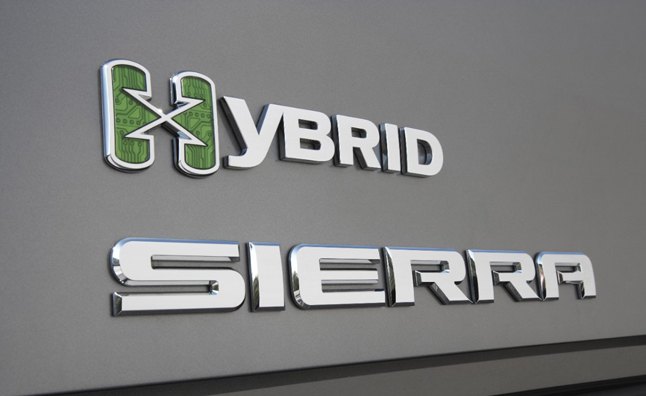
















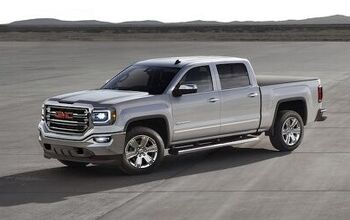
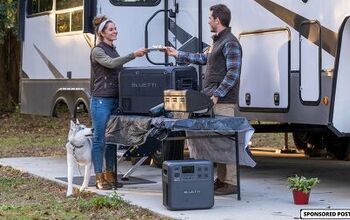
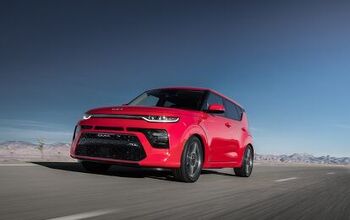







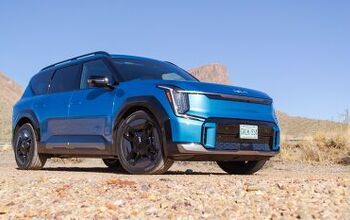



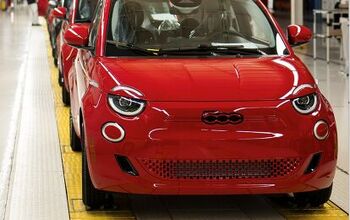
Comments
Join the conversation